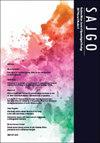单个机构癌症放疗结果的回顾性分析
IF 0.3
Q4 OBSTETRICS & GYNECOLOGY
Southern African Journal of Gynaecological Oncology
Pub Date : 2018-01-02
DOI:10.1080/20742835.2018.1429521
引用次数: 2
摘要
简介:癌症是世界上诊断最常见的癌症。随着癌症治疗在发展中国家面临挑战,需要在资源有限的环境中采取系统和有条理的治疗方法。目的:回顾性评估癌症患者的治疗意向,讨论其治疗效果,并将该队列与现有的发达国家数据进行比较。方法:对2010-2014年西开普省Tygerberg医院689名癌症患者的回顾性队列进行分析。在五年时计算最佳无病生存率,并与SEER数据库进行比较。通过单因素和多因素分析计算各种预后因素。结果:I期的五年最佳无病生存率(DFS)为94.7%(95%CI 68–99),IIIC期为71.3%(95%CI 39–88)。结论:该机构的治疗结果与第一世界国家报告的数据相当。与大多数钴规范相比,二维放射治疗可以有效治疗撒哈拉以南非洲的大多数癌症患者。本文章由计算机程序翻译,如有差异,请以英文原文为准。
Retrospective analysis of radiotherapy outcomes in breast cancer radiotherapy at a single institution
Introduction: Breast cancer is the most commonly diagnosed cancer worldwide. With the challenges of cancer treatment in developing countries there is a need for a systematic and methodical approach to treatment in resource-limited settings. Objective: To retrospectively evaluate the profile of breast cancer patients irradiated with curative intent and discuss the therapeutic outcomes, and to compare this cohort with the available developed-world data. Methods: A retrospective cohort of 689 breast cancer patients from 2010–2014 at Tygerberg Hospital, Western Cape Province was analysed. The best-case disease-free survival was calculated at five years and compared with the SEER database. Various prognostic factors were calculated by univariate and multivariate analysis. Results: The five-year best-case disease-free survival (DFS) for Stage I is 94.7% (95% CI 68–99) and for Stage IIIC, 71.3% (95% CI 39–88). Conclusion: Outcomes of treatment at this institution are comparable to data reported in first-world countries. As two-dimensional radiotherapy compares with most Cobalt specifications, the majority of breast cancer patients in sub-Saharan Africa can be treated efficiently with Cobalt-type technology.
求助全文
通过发布文献求助,成功后即可免费获取论文全文。
去求助
来源期刊

Southern African Journal of Gynaecological Oncology
OBSTETRICS & GYNECOLOGY-
自引率
0.00%
发文量
0
审稿时长
24 weeks
 求助内容:
求助内容: 应助结果提醒方式:
应助结果提醒方式:


